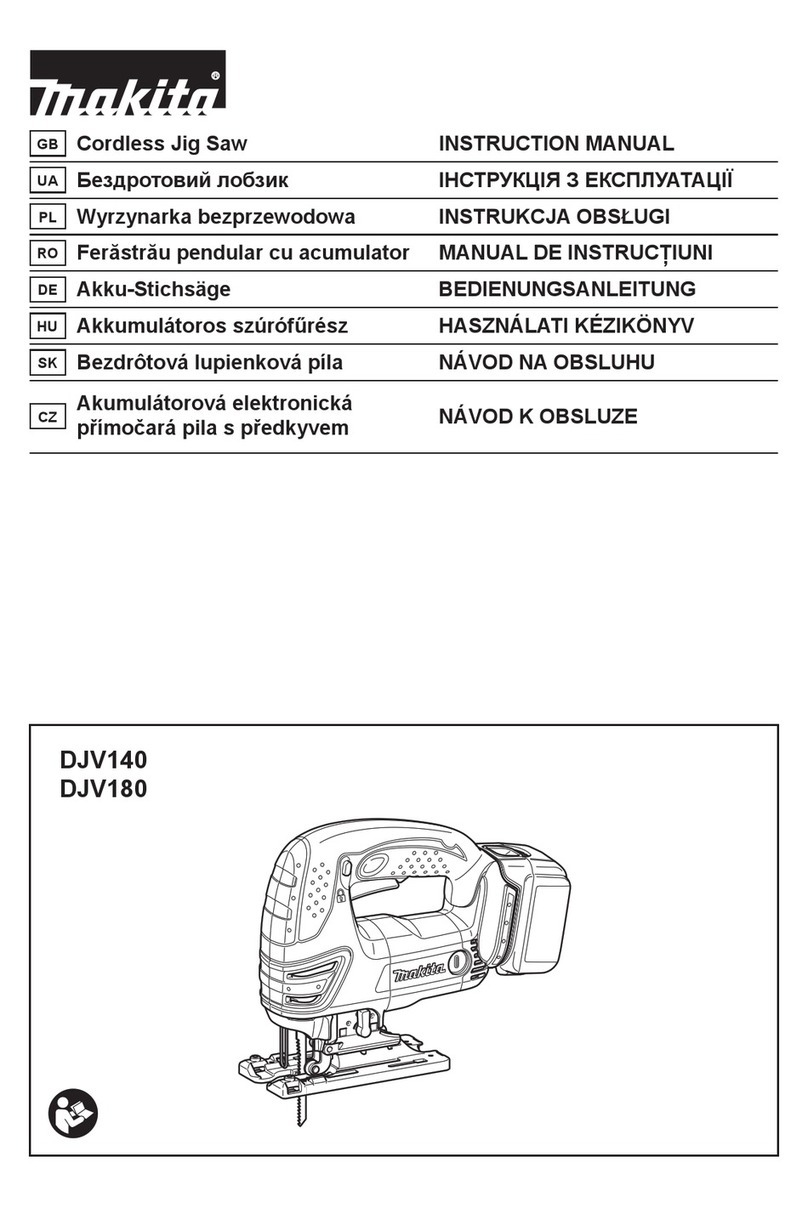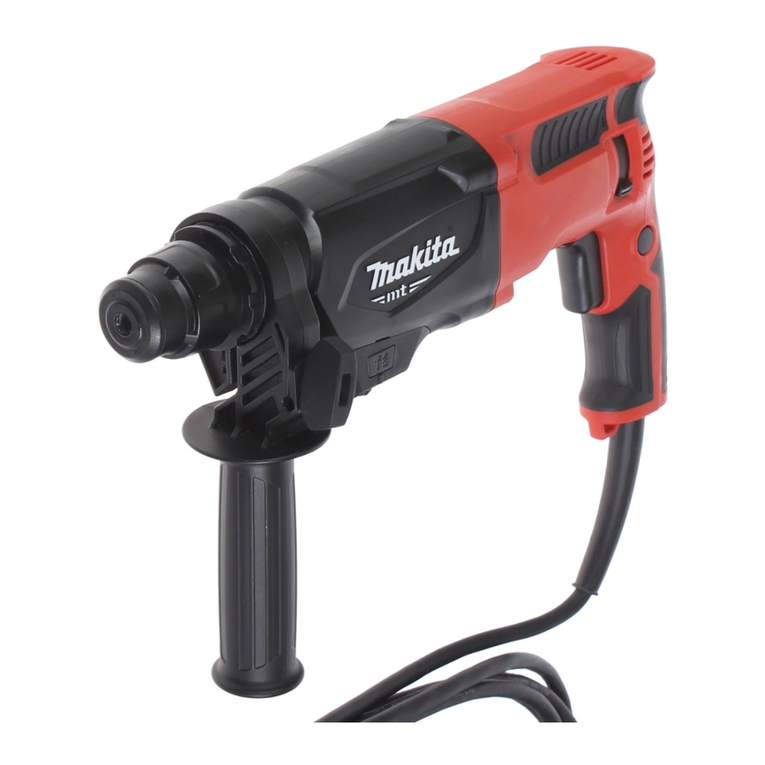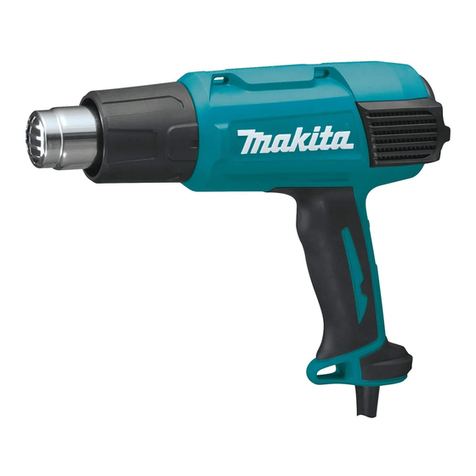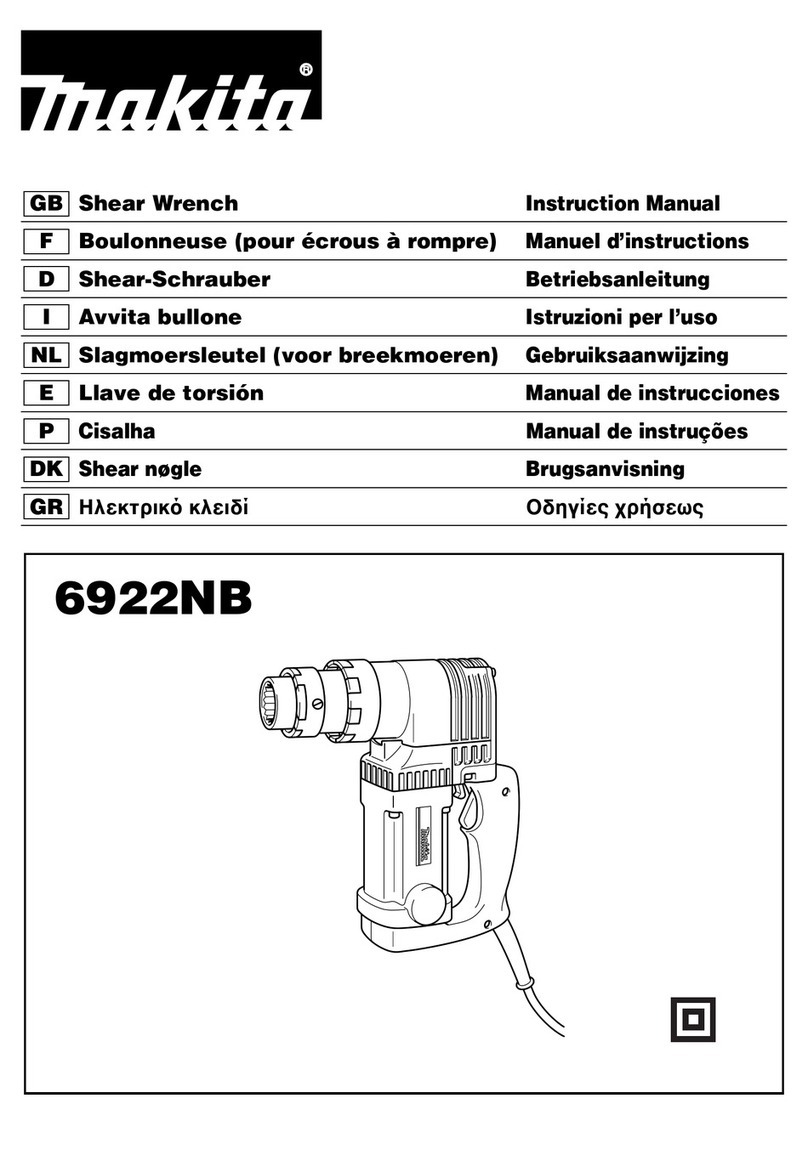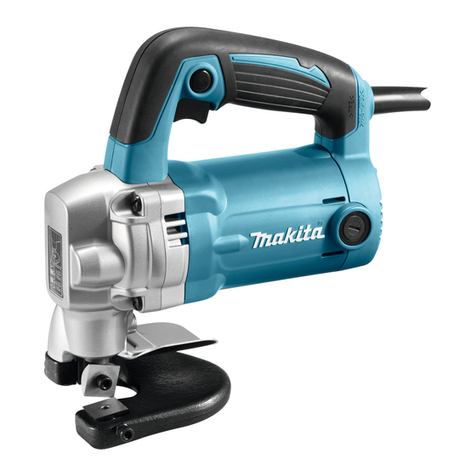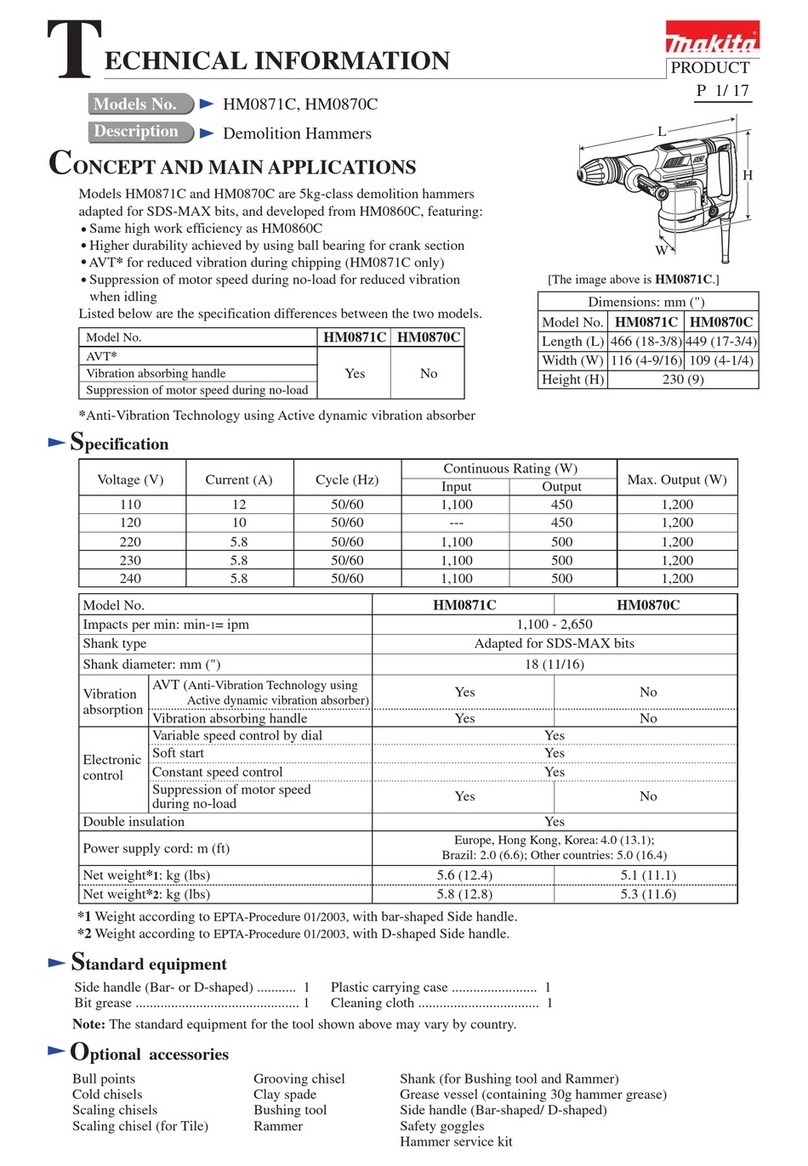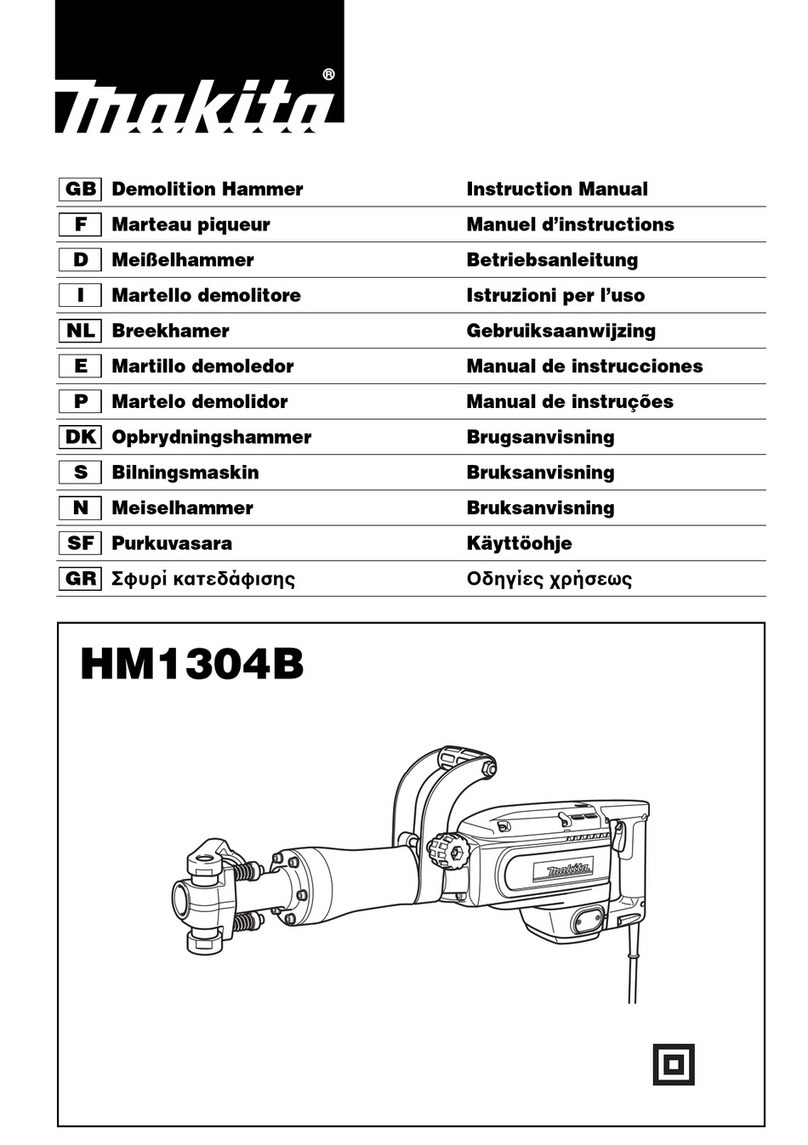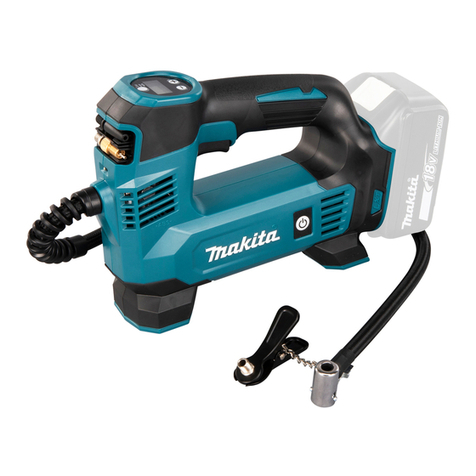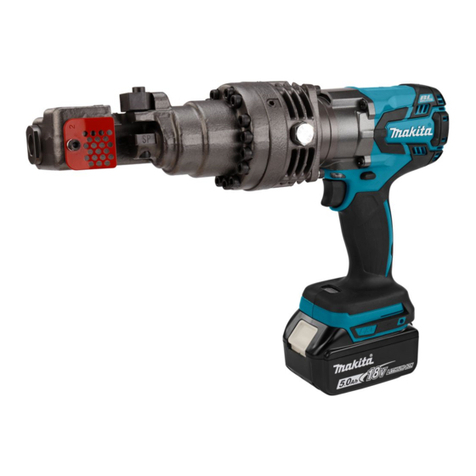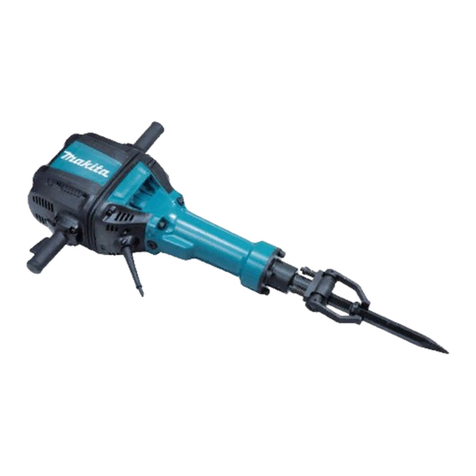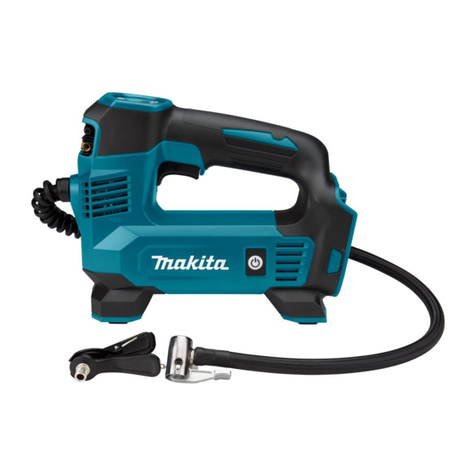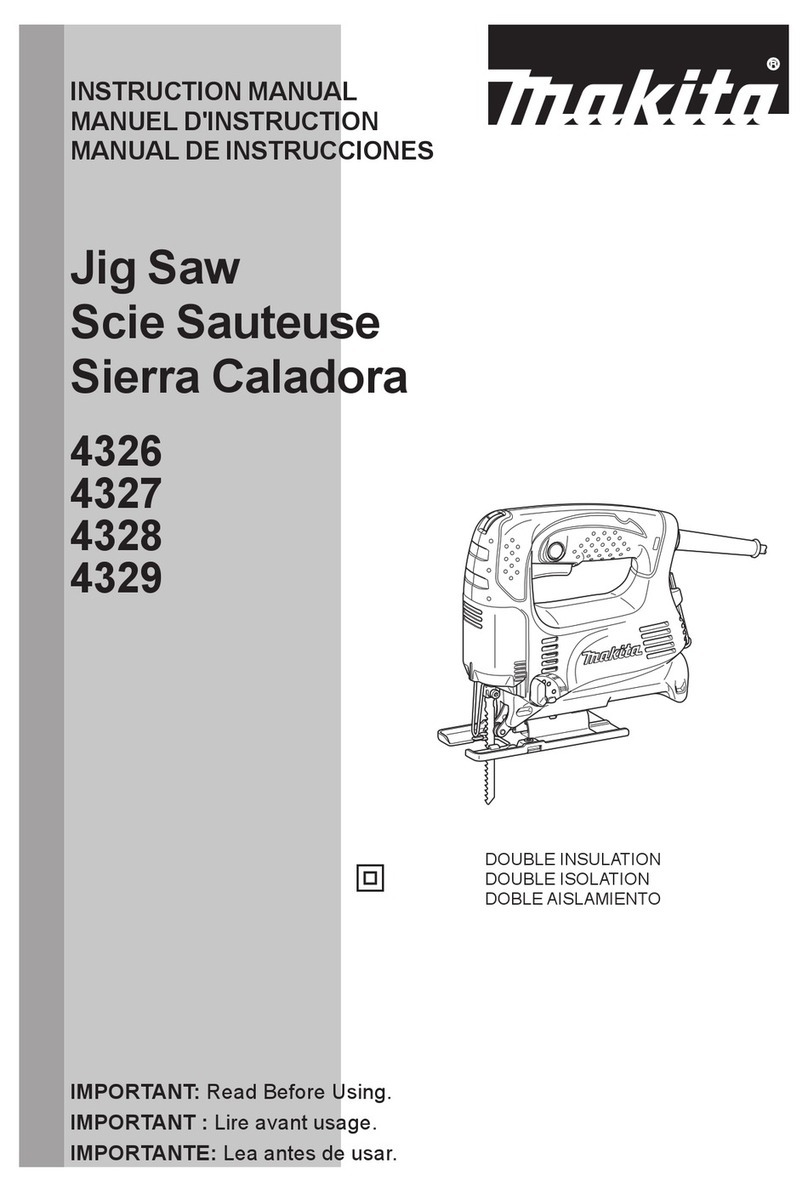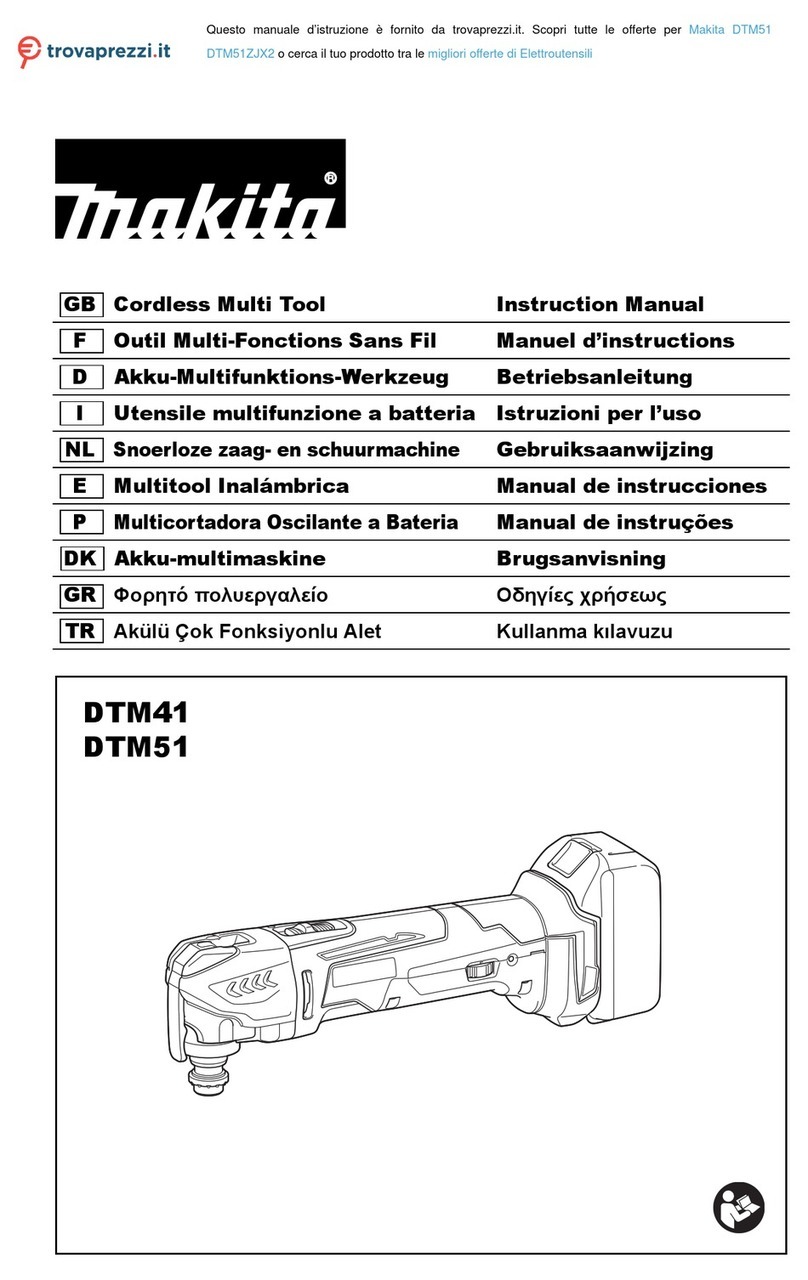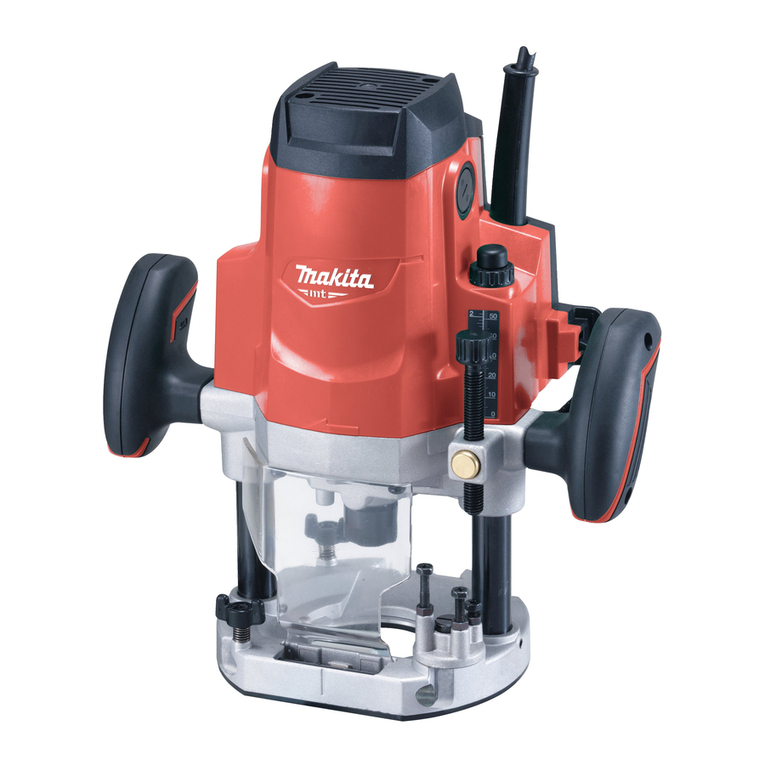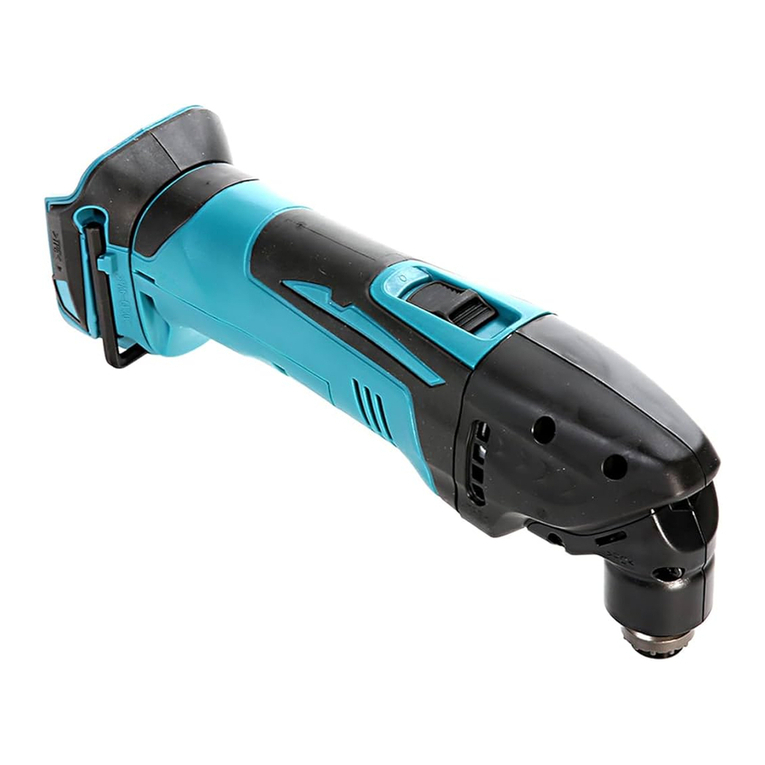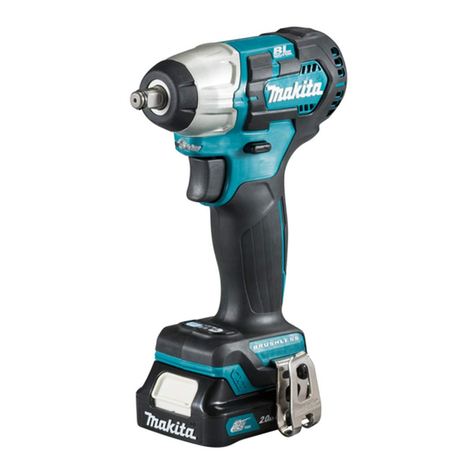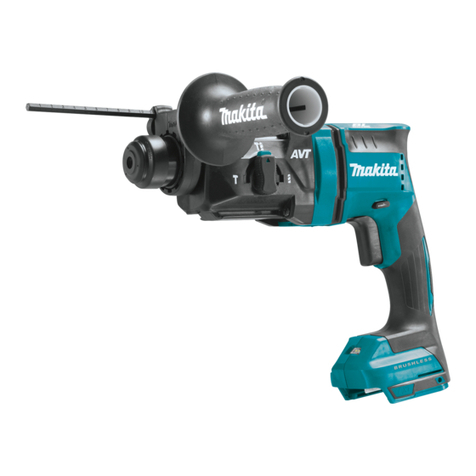
OPERATING INSTRUCTIONS
Installing or removing battery cartridge
(Fig. 1)
•Always switch off the machine before insertion or
removal of the battery cartridge.
•To remove the battery cartridge, pull out the set
plate on the machine and grasp both sides of the
cartridge while withdrawing it from the machine.
•To insert the battery cartridge, align the tongue on
the battery cartridge with the groove in the housing
and slip it into place. Snap the set plate back into
place. Be sure to close the set plate fully before
using the machine.
•Do not use force when inserting the battery car-
tridge. If the cartridge does not slide in easily, it is
not being inserted correctly.
Charging (Fig. 2)
1. Plug the battery charger into your power source.
2. Insert the battery cartridge so that the plus and
minus terminals on the battery cartridge are on the
same sides as their respective markings on the
battery charger. Insert the cartridge fully into the
port so that it rests on the charger port floor.
3. When the battery cartridge is inserted, the charg-
ing light color will flash in red color and charging
will begin.
4. When charging is completed, the charging light
goes out. The charging time is as follows:
Battery 9100 and 9100A: approx. 60 minutes.
5. If you leave the battery cartridge in the charger
after the charging cycle is complete, the charger
will switch into its ‘‘trickle charge (maintenance
charge)’’ mode.
6. After charging, remove the battery cartridge from
the charger and unplug the charger from the
power source.
Battery type Capacity
(mAh) Number of
cells
9100 1,300 8
CAUTION:
•The battery charger is for charging Makita battery
cartridge. Never use it for other purposes or for
other manufacturer’s batteries.
•When you charge a new battery cartridge or a
battery cartridge which has not been used for a long
period of time, it may not accept a full charge. This
is a normal condition and does not indicate a
problem. You can recharge the battery cartridge
fully after discharging it completely and recharging a
couple of times.
•When you charge a battery cartridge from a just-
operated machine or a battery cartridge which has
been left in a location exposed to direct sunlight or
heat for a long time, let it cool off. Then re-insert it
and try to charge it once more.
•When you charge a new battery cartridge or a
battery cartridge which has not been used for a long
period, sometimes the charging light will go out
soon. If this occurs, remove the battery cartridge
and re-insert it. If the charging light goes out within
one minute even after repeating this procedure a
couple of times, the battery cartridge is dead.
Replace it with a new one.
Trickle charge (Maintenance charge)
If you leave the battery cartridge in the charger to
prevent spontaneous discharging after full charge,
the charger will switch into its ‘‘trickle charge (main-
tenance charge)’’ mode and keep the battery car-
tridge fresh and fully charged.
Tips for maintaining maximum battery life
1. Charge the battery cartridge before completely
discharged.
Always stop machine operation and charge the
battery cartridge when you notice less machine
power.
2. Never recharge a fully charged battery cartridge.
Overcharging shortens the battery service life.
3. Charge the battery cartridge with room tempera-
ture at 10°C – 40°C (50°F – 104°F).
Let a hot battery cartridge cool down before
charging it.
Installing or removing socket
Important:
Always be sure that the machine is switched off and
the battery cartridge is removed before installing or
removing the socket.
For machine with square drive (Fig.3&4)
Use 9.5 mm square drive socket with a hole for detent
pin which is available on the market. (Note: Use
6.35 mm square drive socket when using the machine
with 6.35 mm square drive.)
To install the socket, depress the detent pin on the
square drive with your finger and push the socket onto
the square drive until the detent pin is inserted into the
hole in the socket.
To remove the socket, depress the detent pin with a
small hand tool and pull off the socket.
For machine with round drive (Fig. 5)
Use a bit with Form C 6.3 shank which is available on
the market. The bit can be inserted directly into the
round drive and held in place.
To install the bit, push it firmly into the round drive.
To remove the bit, grasp it with a pair of pliers and pull
it out of the round drive. Sometimes, it helps to wiggle
the bit with the pliers as you pull.
Switch action (Fig. 6)
CAUTION:
Before inserting the battery cartridge into the
machine, always check to see that the switch trigger
actuates properly and returns to the ‘‘OFF’’ position
when released.
To start the machine, simply pull the trigger. Release
the trigger to stop.
6704D/DW 6706D/DW general (E) (’100. 3. 27)
6
